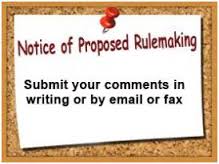>>> Will DOT allow expanded opiates testing? >>>
Revised Mandatory Guidelines and Department of Transportation Notice of Proposed Rulemaking (NPRM)
In the Federal Register dated January 20, 2017, the Department of Health and Human Services (HHS) published a revised Mandatory Guidelines for Federal Drug Testing. The document is 51 pages in length and is applicable to all Federal mandated drug testing. In addition, on January 23, 2017, the Office of Drug and Alcohol Policy and Compliance (ODAPC) published in the Federal Register, a Notice of Proposed Rulemaking (NPRM).
There is one small wrinkle! There is a 60-day regulatory freeze on all recently published regulations for review. Will this affect the HHS Mandatory Guidelines and the DOT NPRM?
My opinion is that these two publications will not be affected. Why? Because the HHS Mandatory Guidelines are not effective until October 2017 and the DOT NPRM is open for a 60-day comment period. It is anticipated that any review will be completed in a timely manner. The other aspect that these publications are safety related as the HHS guidelines apply to the well-being of Federal Employees and in conjunction with DOT of having a safe and drug-free transportation system.
If there are any effects/changes, readers will be notified.
This new revision will apply to all Federal Agencies and their employees; Nuclear Regulatory Commission (NRC) and their regulated entities and employees; and to the Department of Transportation required testing for all regulated transportation employers and employees.
The purpose of the DOT NPRM is to promote the harmonization of the DOT with Mandatory Guidelines. Why is this necessary is that the Omnibus Transportation Employee Testing Act (OTETA) passed and signed into law in September 1991 requires that DOT abide by the mandatory guidelines?
Because most of the readers utilize the regulations promulgated in 49 CFR Part 40, this article and future articles will identify and address those items of interest.
It should be noted that the HHS Guidelines allow for Oral Fluid Testing but only in certain cases as specified in the Mandatory Guidelines. When an oral fluid specimen is collected, it should be with the recommendation of the MRO “(ii) If the specimen collected under direct observation provides an invalid result, the MRO reports this specimen as test canceled and recommends that the agency collect another authorized specimen type (e.g., oral fluid).”
It is also noted that Oral Fluid Testing is not identified nor addressed in the DOT NPRM. Because there is a petition to the FMCSA to allow hair testing (See the previous article titled: “Petition to FMCSA to Allow Hair Testing”, the outcome of that petition rests with the regulators at FMCSA. Because there are no published standards by HHS or DOT along with a recently adjudicated case involving Disparate Impact on hair testing (See future article on this topic).
The primary change to harmonize is to test for four additional Schedule II (of the Controlled Substances Act) prescription medications: Hydrocodone, hydromorphone, oxycodone, and oxymorphone and to remove methylenedioxyethylamphetamine, (MDEA) as a confirmatory test analyte from the existing drug-testing panel and add methylenedioxyamphetamine (MDA) as an initial test analyte.
ODAPC to modify certain sections of 49 CFR 40 for clarification as herein identified
- The handling of urine specimens;
- To remove provisions that no longer are necessary (such as obsolete compliance dates); and
- Add clarifying language to other provisions (such as updated definitions and web links where necessary.)
- The proposal to remove existing requirements related to blind specimen testing.
These items will be discussed at length in another article.
There are a lot of balls in the air right now besides this NPRM. Some of them are:
- Marijuana (Medicinal and recreational use in the workplace);
- The FMCSA Clearinghouse – Database (very complicated);
- FMCSA Petition from trucking companies to do hair testing with a recently adjudicated case involving Disparate Impact; and
- Review and comment on the DOT NPRM.







